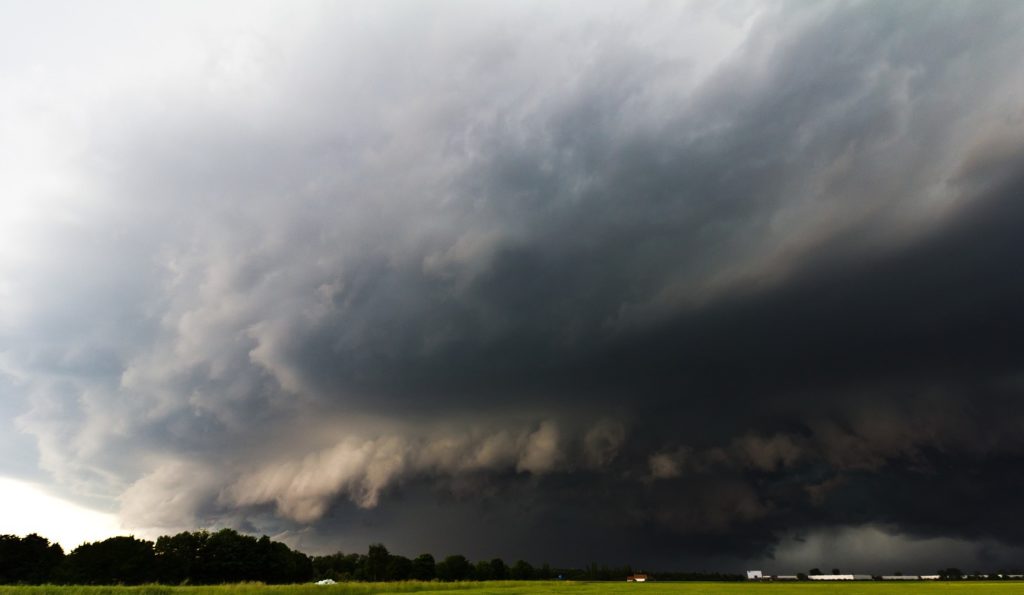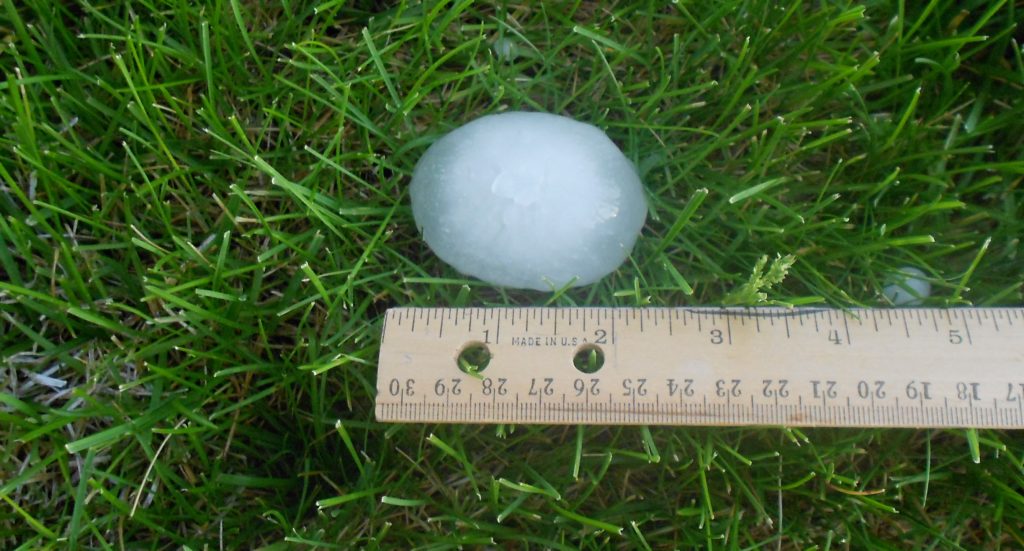What are signs of Storm Damage
You maintain your beautiful home well, and your roof and siding are designed to withstand the elements, but some storms are harsher than others, and some damage is not visible from the ground. All Pro Xteriors reminds you to please be safe, when trying to inspect your home yourself, and remember that we offer free, no-contact exterior home inspections. We can deliver the results of the inspections digitally, with photos of any damage we find, along with recommendations of actions to take, if necessary. So, you never have to risk climbing a ladder yourself.
That said, storm damage is often the results of two forces of nature: Wind and hail. Knowing the signs of damage from either can help you know what type of claim to file for reimbursement of the cost to cure your home’s damage.
Wind Damage:
Wind Damaged Roof. Possibly the most common aftereffect of a severe thunderstorm is wind strewn debris or roofing shingles. Shingles strewn around your property are fairly easy to spot, but other wind damage may be difficult to identify from a visual inspection, like when a shingle’s adhesive seal is broken. The good news is that all manufacturers publish a wind warranty on their shingles. The aftermath of a storm is a stark reminder that when you are selecting shingles for a new roof, make sure you compare the wind coverage. If the winds that caused the shingle damage were above the manufacturer’s wind coverage, it is not automatically your loss. You will need to file an insurance claim with your home insurance company. If the winds were covered in the shingle warranty, you will need to contact the shingle manufacturer to file your claim.

Wind Damaged Siding. Vinyl siding is low maintenance, durable and appealing, but it can be seriously damaged during a storm. Siding with chips and holes is no longer protecting your home and should be examined quickly to determine what repairs should be done.
Aluminum siding can also suffer dings and damages from a storm’s wind. Entire pieces of aluminum siding may break off. The dents, chips and cracks left behind after a severe storm may be best discovered in early morning or evening hours. The professionals at All Pro Xteriors have years of experience at spotting wind and hail damage. Call us at (952) 486-7834 for a free exterior home inspection if you have any concern a recent storm left damage.
Signs of wind damage to roof and siding:
- Missing Roof Shingles
- Horizontal lines on roof shingles, where granules have been worn off about one to two inches beneath the next row of shingles. The shingle may have a broken adhesive seal and was flapping in the wind during the storm.
- Cracked, or split siding may be a direct result of the wind damage, but flying debris from the wind can also result in chips, breaks, and holes. Once this happens, the siding can no longer protect your home, and may actually be trapping water against the wood under the siding where the water can spread causing more damage along the way.
Hail Damage:
After making it through a severe hailstorm, most of us want to take stock of the damage. Homeowners may think about their cars first, but it is vital that you quickly check the roof and siding of your home too. Hail does not have to be large to cause significant damage to both your roof and your siding.

Hail Damage to the roof. Small dents in your metal roofing components, chips cracks or missing pieces of asphalt on your shingles, missing granules from the asphalt shingles, and dents in either metal or asphalt roofing, are all signs of hail damage. The ridge cap usually takes the brunt of the storm damage. Since it plays a major part in keeping your roof watertight, it needs to be replaced immediately if damaged.
Hail damage to siding. On aluminum siding, check for oxidation marks after hail. Many homeowners choose to coat or paint it, but oxidized siding can be a warning that your siding is close to the end, and needs to be replace.
On vinyl siding, following a hailstorm, you should look for cracks, chips, splits, dents or holes. Depending on the storm’s severity, your siding may even have buckling or warping.
When to file a claim:
If your siding falls off due to mold build up due to poor maintenance, the insurance isn’t likely to pay a claim. If your siding is chipped or pulled off by heavy wind, the homeowner’s insurance is likely to cover it. Your siding manufacturer publishes the level of wind the siding is built to withstand. If the wind was within that range and the years of coverage, you may file the claim with your siding manufacturer.
If your roof leaks during a storm due to poor maintenance, or an expired roof lifecycle, your insurance firm might not only refuse your claim, but drop their coverage on your home. If your roof leaks because the storm removed shingles or metal panels, the insurance is more likely to work with you.
All Pro Xteriors Inc. has been around for over twenty years. We work with insurance companies all the time and may be able to help you with your claims. Visit our website http://allproxteriorsinc.com/contact/ to contact us or call us at (952) 486-7834. We can inspect the damage and may be able to help you with your claim process.
